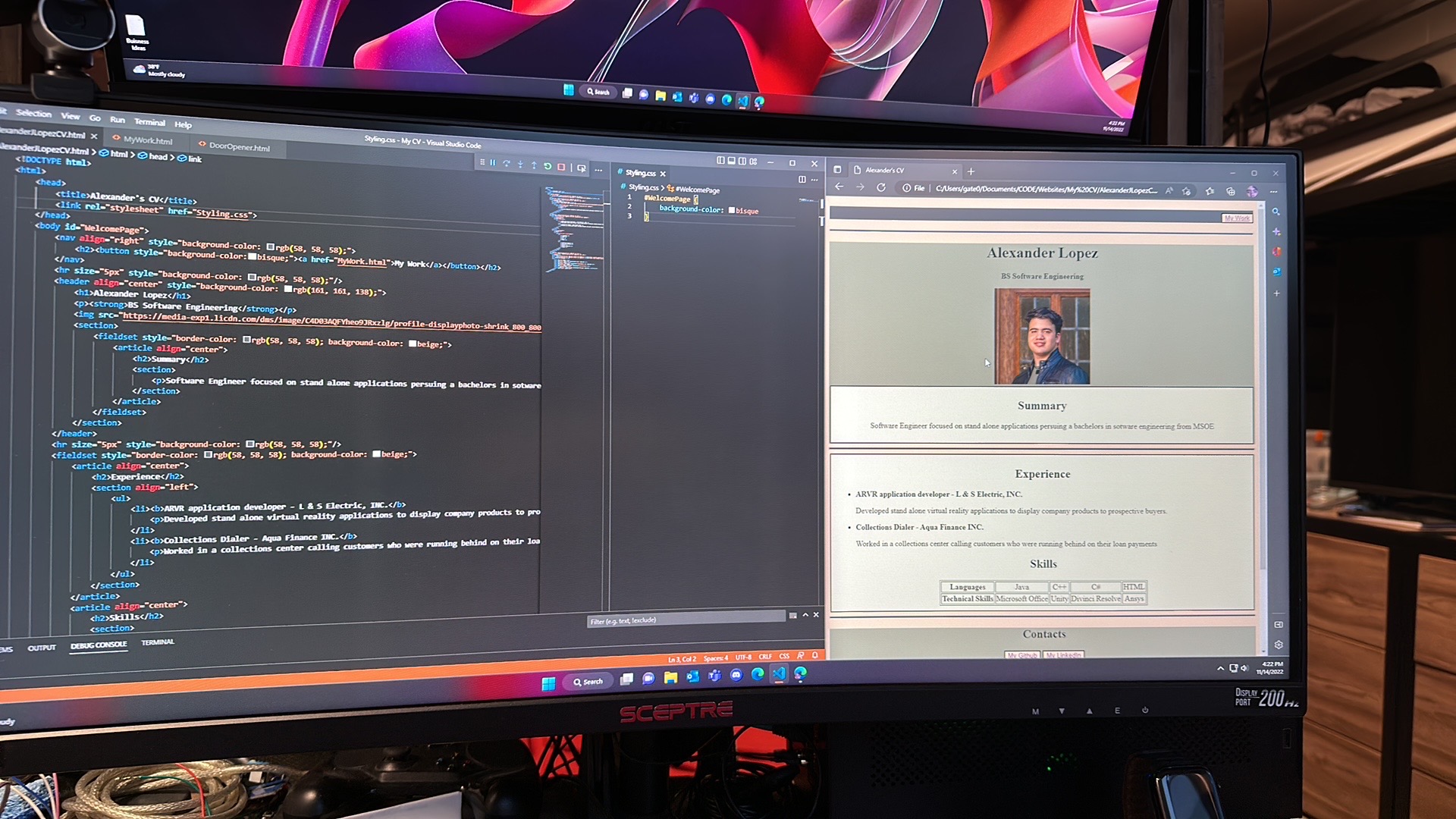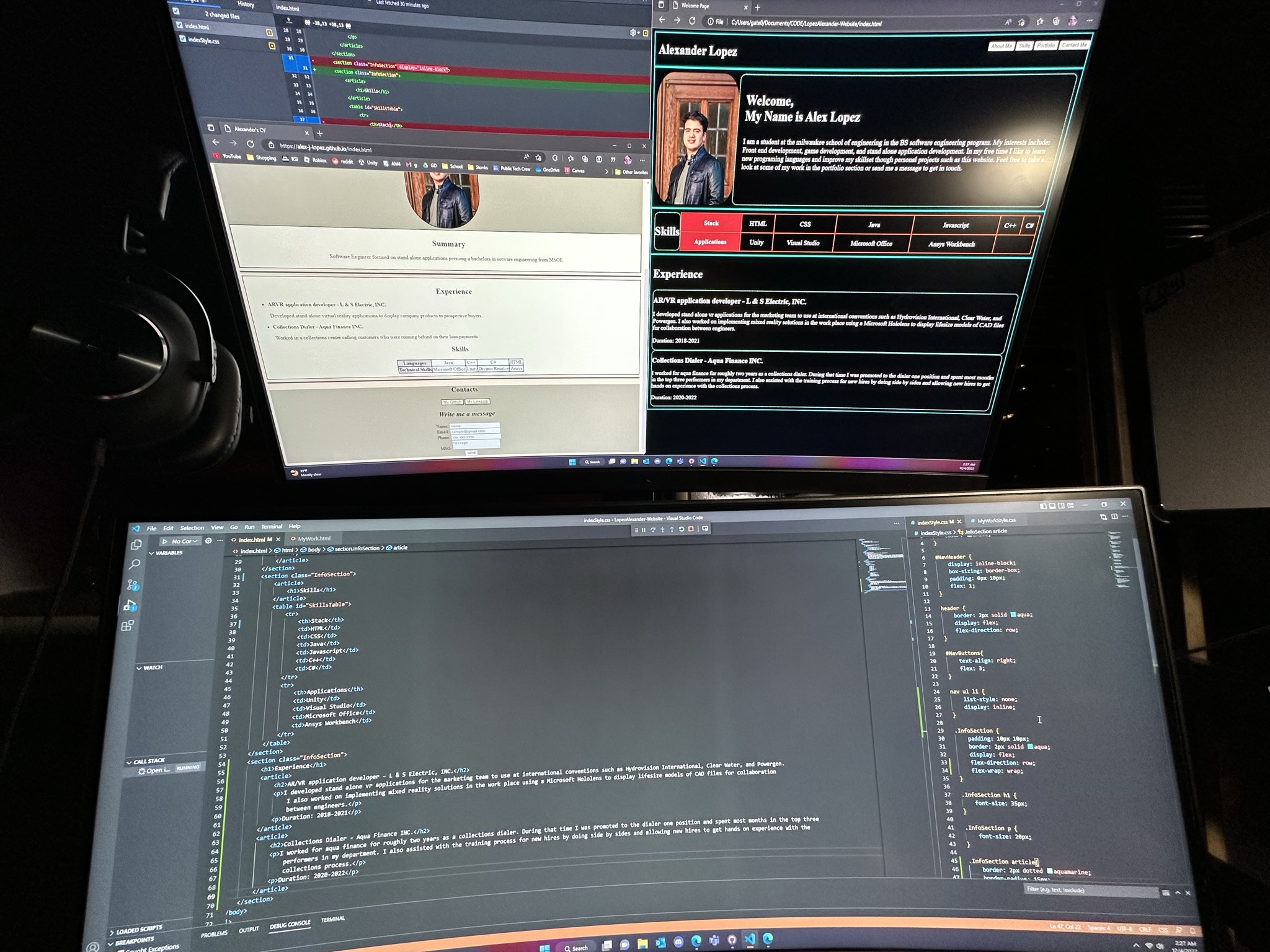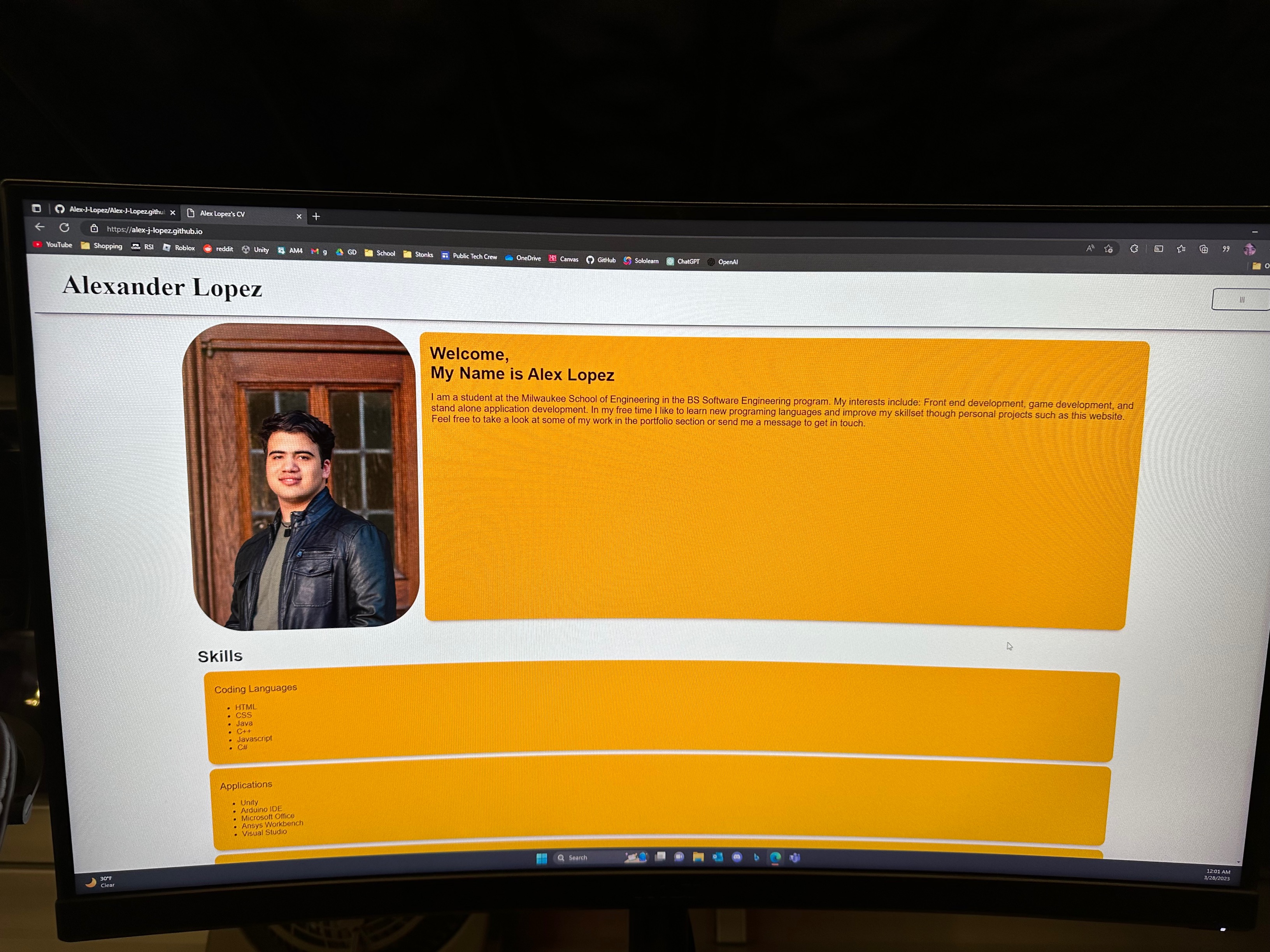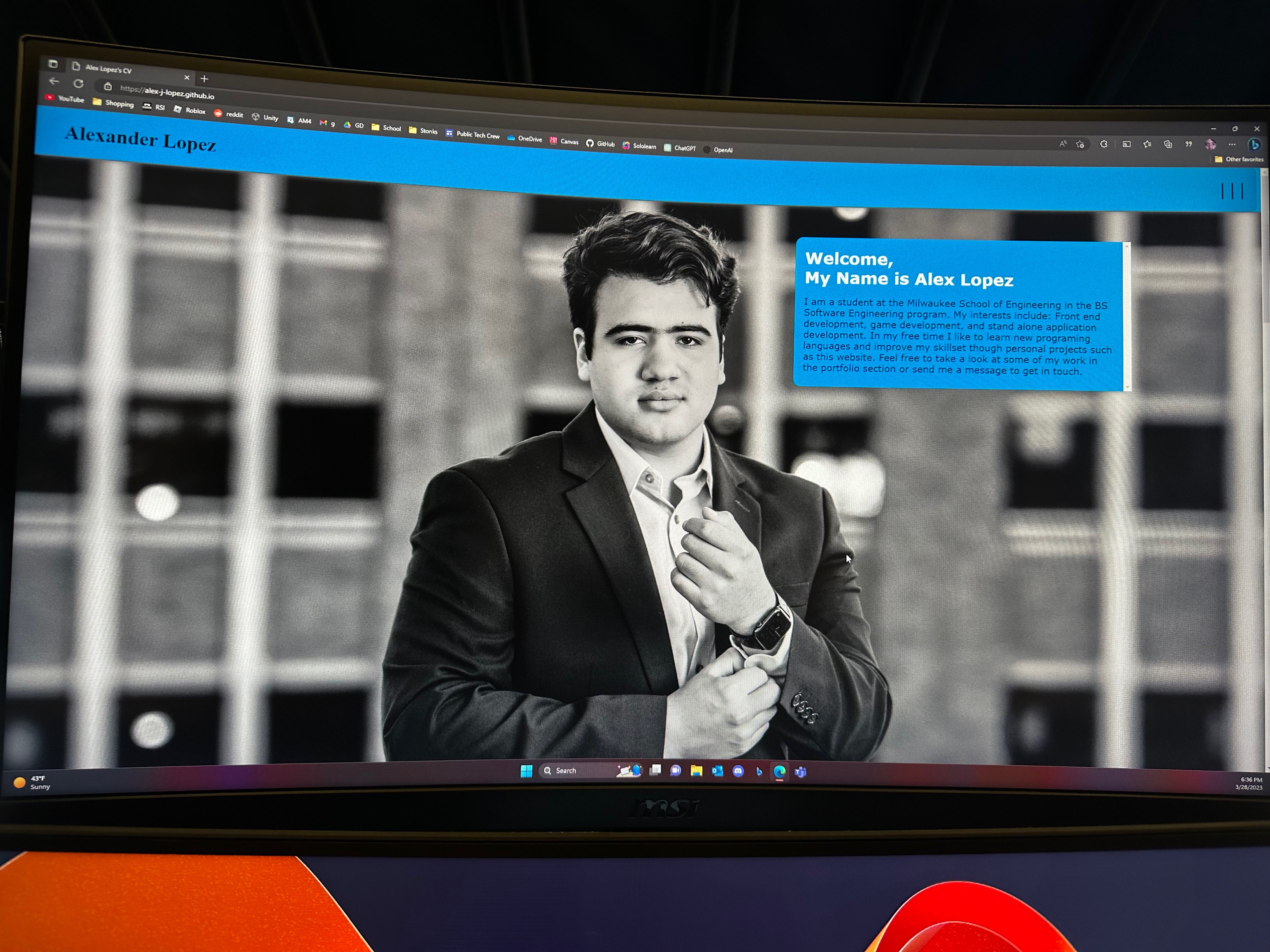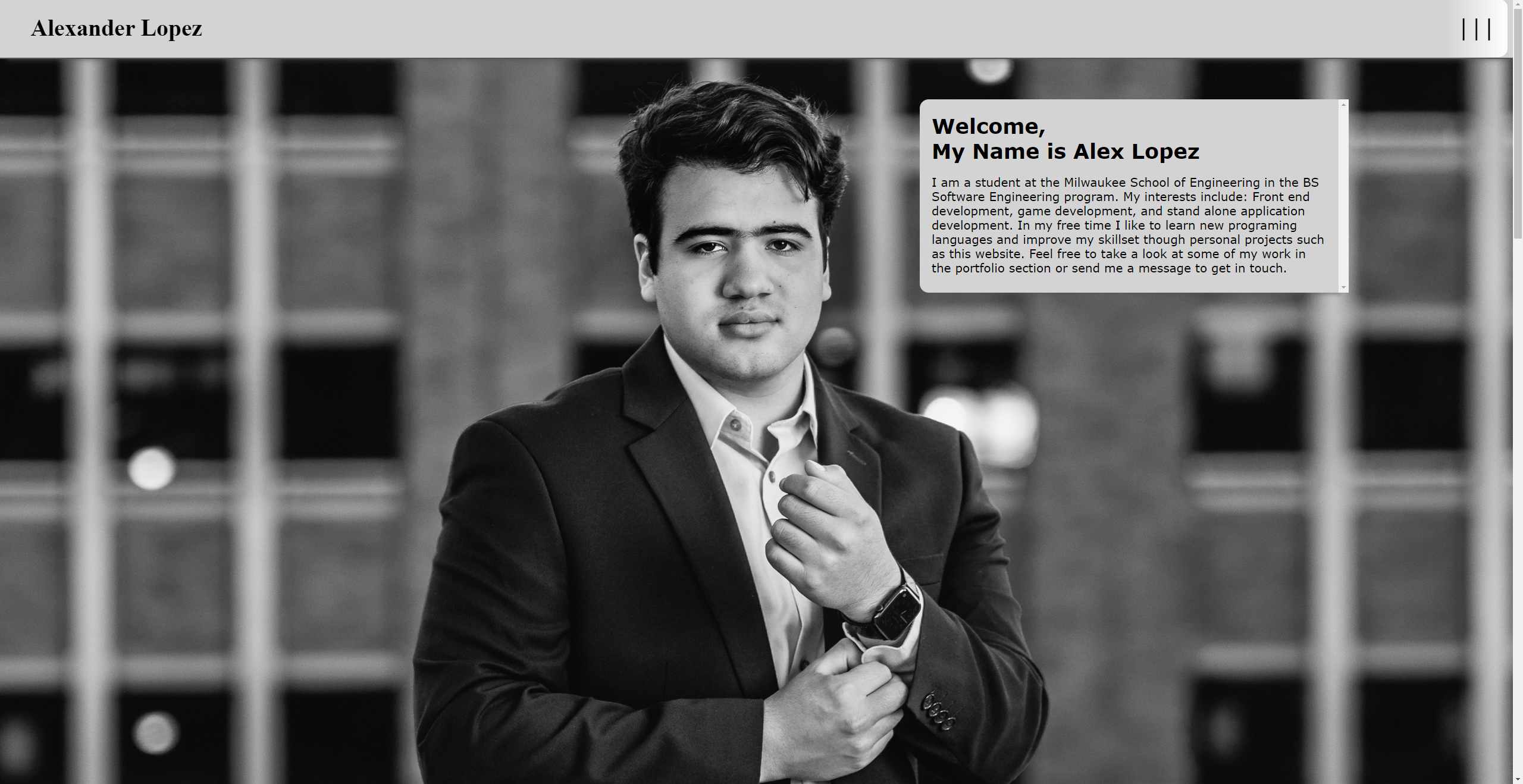Problem Statement: When I started my freshman year at MSOE University in the fall of 2022, I had far reaching ambitions for myself. I quickly began doing personal projects to improve my skills, and I needed a place where I could keep a record of each of my projects and my creative process.
Solution: There were a few solutions to my problem. I could purchase a subscription to a website making application and create my website that way. I could give prospective employeers a link to a google drive with all my projects. Or, I could improve my web development skills and create my own website. As you can tell by now, the thrid choice was both the most professional and also the choice I decided upon. I learned HTML, CSS, and some javascript in order to make this idea happen.
Skills Used:
- React.js
- Next.js
- TailwindCSS
- JSON
- HTML
- CSS
- JavaScript
- Responsive Web Design
- GitHub
- CI/CD
- Github Actions
Source Code
